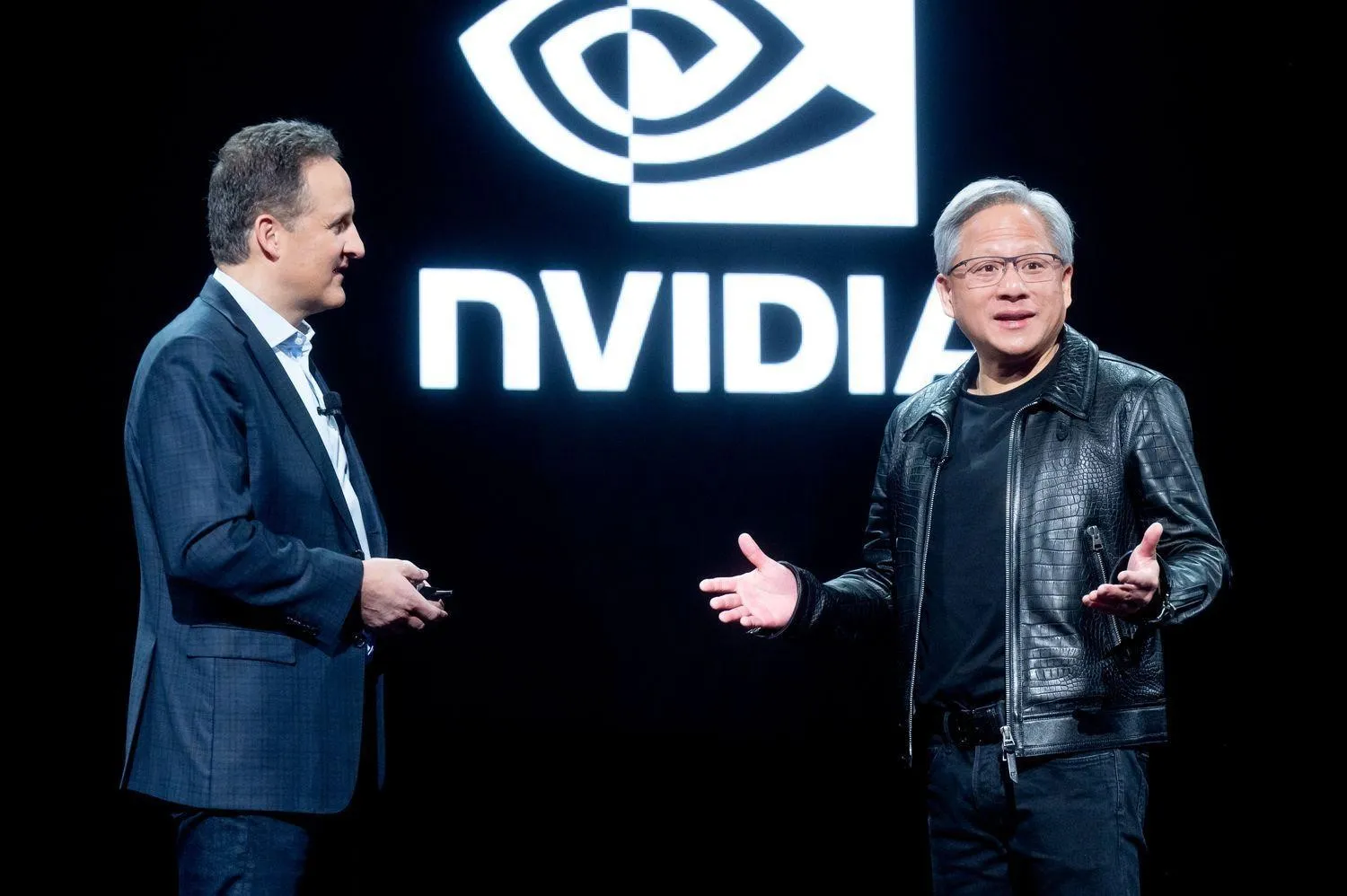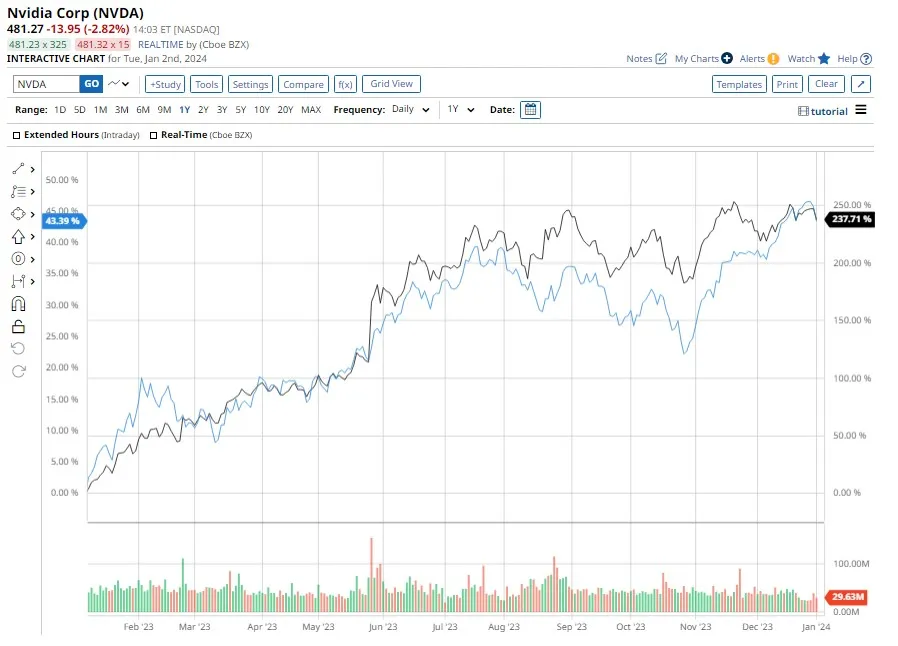00:00
Introduction: Who is NVIDIA?
In recent years, more notably, as of November 2022, ChatGPT and AI have taken over the world, with over 180 million users worldwide. NVIDIA, one of the most important players in the technology industry, has been making progressive and advanced graphics processing units (GPUs), application programming interfaces (APIs), and artificial intelligence supply (system-on-a-chip units (SoCs) for the mobile computing and automotive market) for many years, contributing greatly to the rapid technological advancements we are experiencing today. Founded in 1993 by Chris Malachowsky (Senior Vice President), Jensen Huang (President and CEO), and Curtis Priem (President and cofounder), the company has made its mark on the highly competitive and ever-changing GPU and Graphic Card market in the modern age. Ever since its creation in 1993, NVIDIA has grown immensely and reached its status as one of the most valuable tech companies in the world.The Early Years of NVIDIA
NVIDIA began its journey in Silicon Valley with the initial idea of making 3D graphic cards for gamers. Furthermore, all co-founders of the company shared the inventive idea of utilizing the power of GPU technology to completely renew computing and graphics rendering strategies. In the 1990s, while most companies prioritized creating central processing units (CPUs), and versatile chips that carry out computer commands, Huang, Malachowsky, and Priem undertook a much more demanding project. They decided to develop a Graphics Card, a specialized chip designed to work with Sun’s workstations in displaying graphics on the screen, diverging from the mainstream focus on CPUs. As they became more and more advanced in their practices of this vision, they proceeded to create a company which pushed many limits when it came to the realm of graphics and computing. As mentioned above, NVIDIA was created in 1993. Interestingly, the three friends later turned co-founders, met at a Denny’s diner, where Huang used to be an employee, to discuss their newly formed ideas about starting a company and creating 3D graphic chips for PCs. The NV1 chip was the first device that the company delivered to the market. Even though the company struggled with the engineering and architecture of the products at first, due to the rapid growth of technology, they managed to emulate the RIVA 128 NV3, the first PC chip the world has ever emulated. This chip was a feat of engineering, and in the first few months of its creation, sold 1 million units. Later, NVIDIA quickly made a name for itself with its unique graphics cards and GPUs. The company paved the way for further improvements by impressing consumers with the early products.
The Rise and Success of NVIDIA
As the computing and tech industry began growing rapidly, so did NVIDIA. The corporation moved on with its innovative product offerings, becoming one of the main variables of the GPU market. The company’s GPUs became mostly known for their reliability, unconventionality, and high technology, which led to a notable number of loyal customers and industry accolades. Sometime around the year 2003, NVIDIA made many strategic decisions to subvert its platform beyond gaming and consumer electronics. The company ventured into the realm of artificial intelligence, data centers, and autonomous vehicles, recognizing the potential for growth in these emerging markets. This forward-thinking approach paid off, as NVIDIA’s products found applications in industries ranging from healthcare to finance, further cementing its reputation as a tech powerhouse. In addition to their advanced chips, NVIDIA’s unique software includes GPU-accelerated computing with CUDA, cuDNN for deep learning, TensorRT for optimized inference, DLSS for AI-enhanced gaming, Omniverse for collaborative design, and Studio Drivers for creative professionals. These software solutions leverage NVIDIA’s GPU power to deliver high-performance computing, AI capabilities, real-time graphics enhancements, and industry-specific optimizations, positioning NVIDIA as a leader in software innovation complementing their hardware offerings.How NVIDIA Surpassed the Competition
In recent months, NVIDIA has achieved an incredible milestone by surpassing industry giants like Microsoft in terms of market capitalization. By 2024, its market capitalization had exploded to $3 trillion. NVIDIA’s successful story in surpassing companies like Microsoft highlights its flexibility to the ever-changing market and its ability to capitalize on emerging trends. By staying ahead of the curve and continuously producing new and trendy products, NVIDIA has captured the imagination of investors, experts, and consumers alike. Furthermore, NVIDIA has been partners with Tesla for several years, dating back to at least 2016. Tesla first started using NVIDIA’s hardware, specifically the NVIDIA DRIVE PX 2 platform and other software for its Autopilot feature in its vehicles, and the collaboration has continued to evolve throughout the years since Tesla has integrated more advanced AI technology into its vehicles. Despite pushing boundaries in technological advancements, both companies have faced many challenges and public scrutiny regarding the development of autonomous driving and its safety and reliability. In addition to using NVIDIA’s hardware, there have been discussions about Tesla developing custom AI chips for its vehicles which will potentially reduce its reliance on NVIDIA.



perfect !